Median S’pore households made S$9240 more last year, monthly income to cross S$11,000 in 2024
Singapore households made $770 more per month compared to 2022, for a total of $9240 in additional income from work over the entire year.
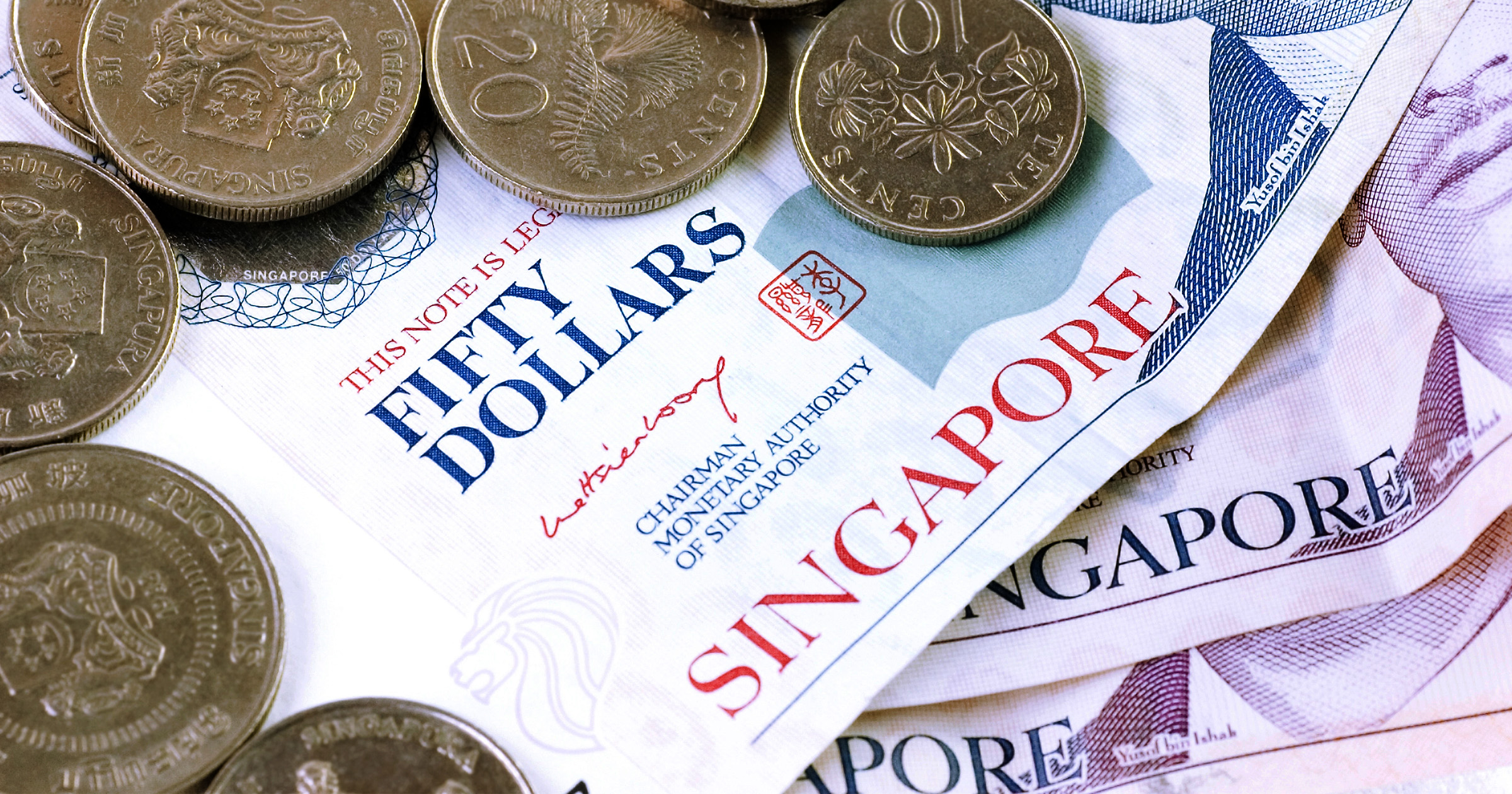
Disclaimer: Unless otherwise stated opinions expressed below belong solely to the author.
Singapore Department of Statistics released its latest Key Household Income Data 2023 two days ago, reporting that the median monthly household income from work (inclusive of employer CPF) increased to S$10,869 last year among resident households (citizens and permanent residents).
Median figure is used as it is the central value among all households — half of Singaporean residents make more and half make less. It is more relevant than a simple average, which is higher but skewed by very wealthy households which make considerably more than most Singaporeans do.
Inflation eroded some of the 7.6 per cent increase in nominal terms, leaving just 2.8 per cent when corrected for the rising prices. Fortunately, the change is still positive.
In money terms, it translates to S$770 more compared to 2022, for a total of S$9240 in additional income from work over the entire year.
It does not include any transfers from the government or other sources of income (such as rental).
Rich keep getting poorer
Somewhat surprisingly, perhaps, it was another year which saw the incomes of the wealthiest Singaporeans decrease in real terms. However, unlike before 2023, the poorest also suffered a decline:
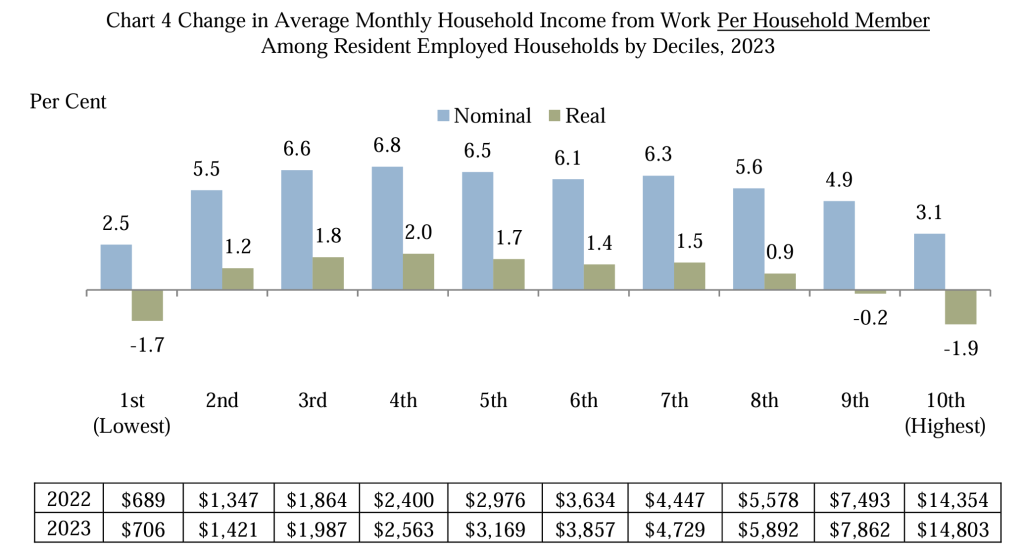 Source: Key Household Income Trends, 2023, Singapore Department of Statistics
Source: Key Household Income Trends, 2023, Singapore Department of StatisticsFortunately it seems to have been just a hiccup in an otherwise positive trend, which has kept incomes of all groups but the richest growing over the past decade:
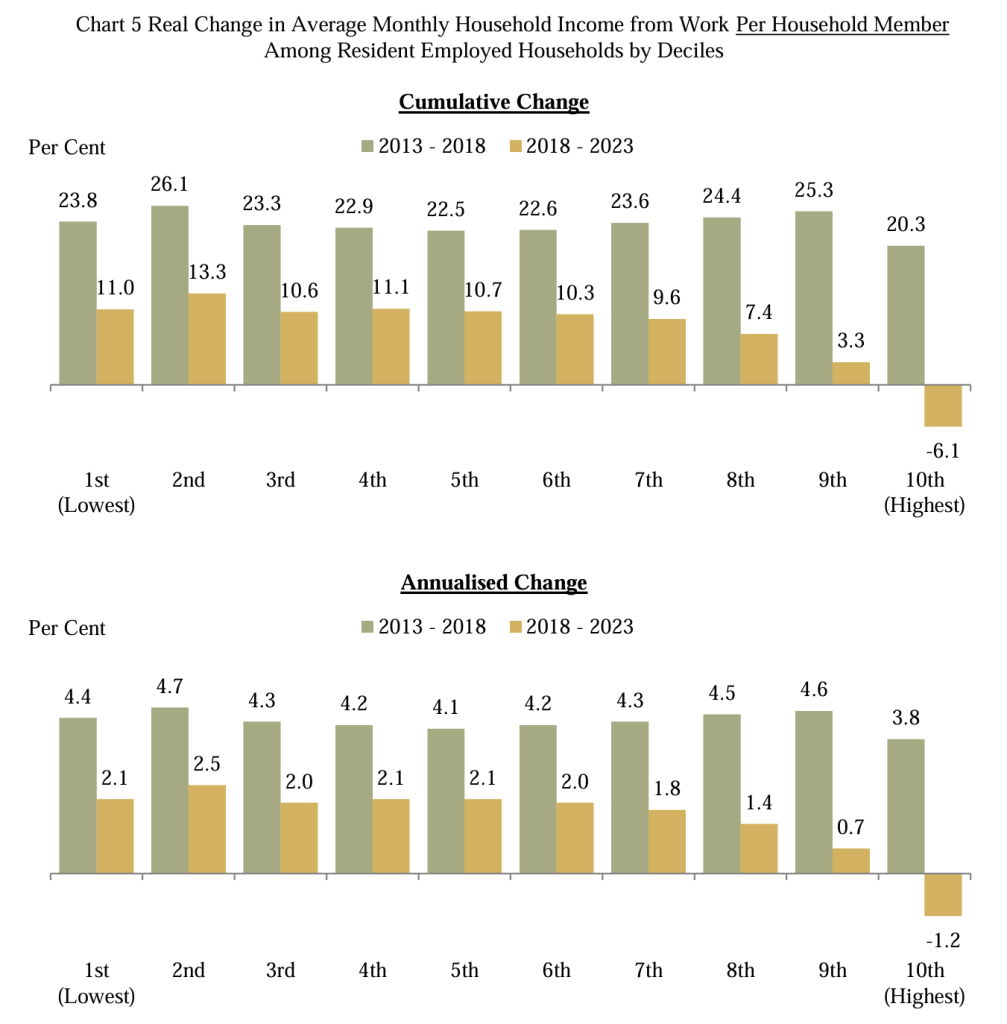 Source: Key Household Income Trends, 2023, Singapore Department of Statistics
Source: Key Household Income Trends, 2023, Singapore Department of StatisticsIt’s worth noting how big the gap between the two 5-year sub-periods is for the richest locals.
Despite keeping pace with other income groups between 2013 and 2018, at around 20 to 25 per cent, the wealthiest deciles suffered a significant drop in income growth or even a decline in real incomes among the top 10 per cent of the society.
They are more than 6 per cent worse off than they were all the way back in 2018.
Inequality
For those concerned about inequality, however, this is good news, as the Gini coefficient followed suit and continues its falling, indicating shrinking income inequality levels, further accelerated by government handouts:
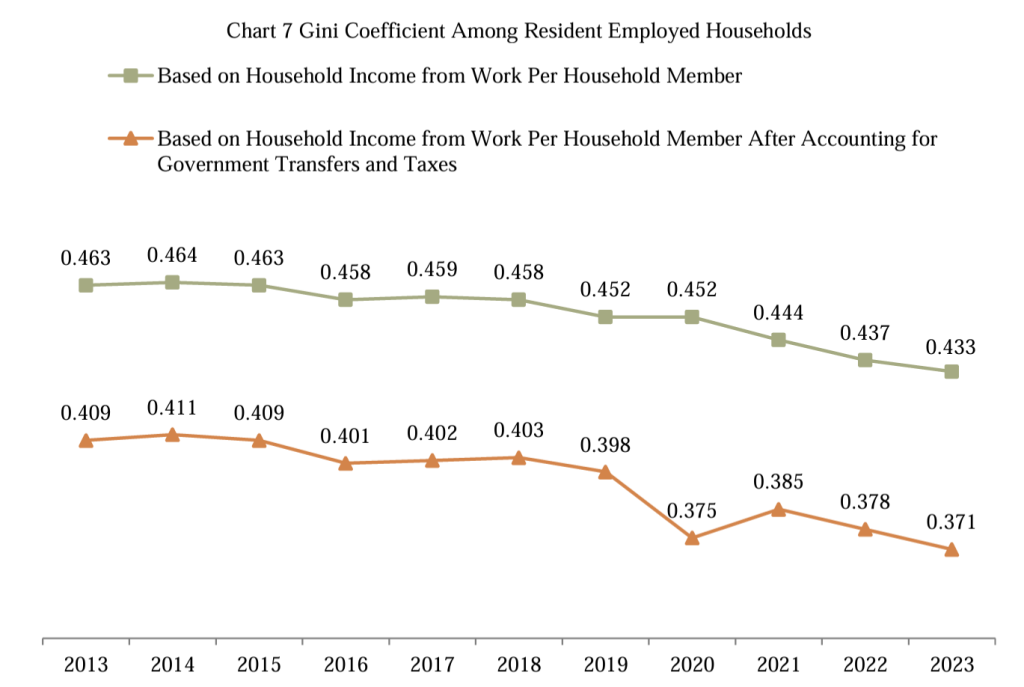 Source: Key Household Income Trends, 2023, Singapore Department of Statistics
Source: Key Household Income Trends, 2023, Singapore Department of StatisticsS$1500 extra from the government
Speaking of handouts, government schemes aimed at reducing the burden of the transition to higher GST rates for most regular households, boosted the total average received for each household member to S$6371, up by S$512 per person compared to 2022.
Given the household size of a little over three pax, it means that all received an average S$1500 extra in government transfers last year.
In reality, it was even more for most Singaporeans, as the wealthiest pay by far the most in taxes while qualifying for the fewest benefits.
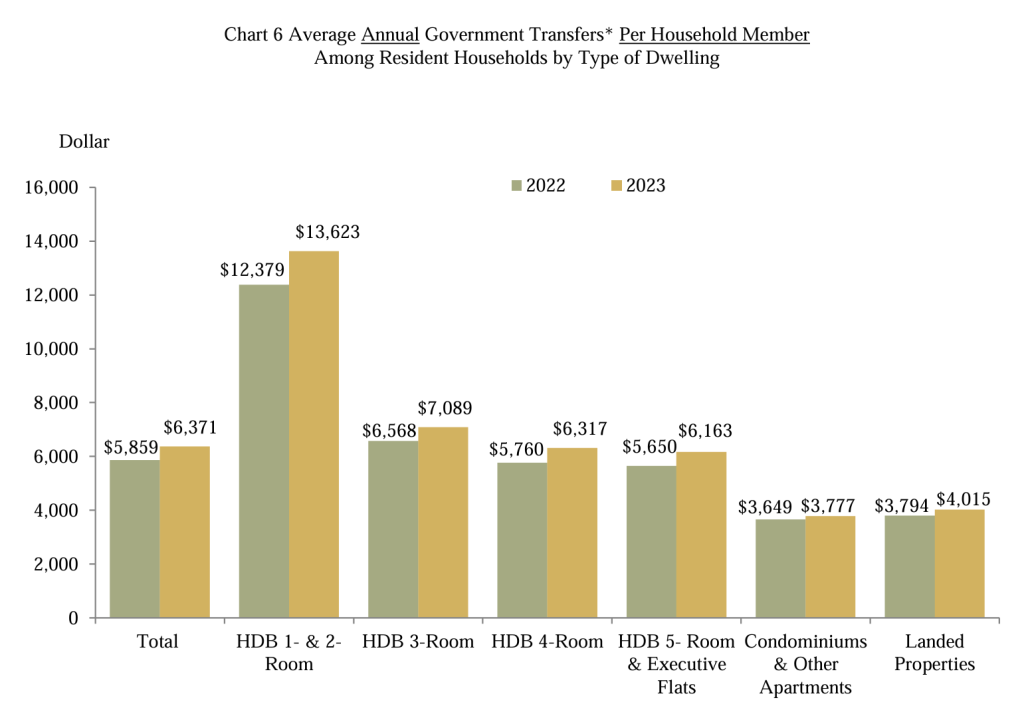
As you can see, residents of the smallest HDB apartments received S$1244 more than in 2022, per person – more than two times the average, while all groups below 5R and Executive Flats still stayed above it.
S$11,000 or more in 2024
Given the slowing inflation, the nominal increase in incomes should also slow down this year, although it is still expected to come in at at least 4 per cent.
This would take the median to around S$11,300 per month, adding another S$5000 annually per each middle-income household.
And while it may not result in a huge bump in the real value of local salaries, it makes Singaporeans relatively wealthier when they travel abroad, given how strong the SGD continues to be against other currencies.
That’s why, despite some struggles with rising living costs (which are, however, a global problem), the Year of the Dragon might be the year of globetrotting, even for an average Singaporean.

 Lynk
Lynk 






























